In the data sector, ICWRGC is in charge of coordinating the Global Terrestrial Network – Hydrology (GTN-H) as well as the GEMS/Water Data Centre (GWDC). The GEMS/Water Data Centre (GWDC) is hosted by ICWRGC since 2014, where it operates the Global Freshwater Quality Database GEMStat within the scope of the GEMS/Water Programme of the United Nations Environment Programme (UNEP). We were given the mandate to coordinate and develop the Global Terrestrial Network – Hydrology (GTN-H) by the World Meteorological Organization (WMO) in 2017.
Both activities make a substantial contribution to implement the United Nations’ Sustainable Development Goals. The International Soil Moisture Network (ISMN) is another data centre that is going to be implemented at ICWRGC. It was developed by TU Vienna and funded by the European Space Agency (ESA). Currently, it is transferred from Vienna to its new host. In Germany, this concentration of global hydrological data expertise is complemented by the Global Runoff Database (GRDC) hosted by BfG and DWD’s Global Precipitation Climatology Centre (GPCC).
The Global Terrestrial Network – Hydrology
Established in 2001, the Global Terrestrial Network – Hydrology (GTN-H) is a federated network of major data centres providing water-related terrestrial monitoring data at a global scale. GTN-H aims at linking these data in support of scientific advance and operational applications with regard to climate variability and change as well as water resources assessment and management.
GTN-H is a joint project of the World Meteorological Organization and the Global Climate Observing System (GCOS). GTN-H likewise supports the Group on Earth Observations / Integrated Global Water Cycle Observations Community of Practice (GEO/IGWCO-CoP) by providing observations and findings from the various data centres.
Through its federated network of collaborating global data centres, GTN-H provides premier access to data and information including – inter alia – runoff, lakes and reservoirs, precipitation, groundwater, soil moisture, and water quality or the content of hydrogen and oxygen isotopes in rivers and precipitation.
GTN-H supports the development of integrated products to enhance the value of data by means of integration and by facilitating solutions to complex science and applications products.
GTN-H thus underpins the generation of datasets from Essential Climate and Water Variables suitable for:
- Research in the areas of global and regional climate change
- Environmental Monitoring
- Hydrology and water resource management
GTN-H is active in supporting current and emerging technologies and standards, best practices and available infrastructure and develops global and regional data products.
A list of the GTN-H network members can be found at:
GEMS/Water Data Centre
The Global Environment Monitoring System for Freshwater (GEMS/Water) of the United Nations Environment Programme (UNEP) was founded in 1978 as a global network for water quality data monitoring. Today, the GEMS/Water Data Centre (Koblenz/Germany), the UNEP Global Environment Monitoring Unit (Nairobi/Kenya), and the GEMS/Water Capacity Development Centre (Cork/Ireland) jointly form the main elements of GEMS/Water.
The key targets of the programme include collecting water quality measurement data of the UN member states as well as capacity development in member states. Moreover, GEMS/Water is in charge of developing the indicator 6.3.2 on ambient water quality. Thus, it directly supports achieving the objective “Clean water and sanitation for all”.
The surface and groundwater data provided by countries and organisations on a voluntary basis, are made available via the GEMStat information system operated by the GEMS/Water Data Centre. The water quality data provided by GEMStat may be used i.a. for status assessments, political decision-making processes, research purposes, or within the scope of educational and training programmes
All water quality data and data products available in GEMStat can be retrieved via the homepage of the GEMS/Water Data Centre:
Moreover, the following Story Map gives an overview of the aims, individual aspects and ongoing activities of GEMS/Water:
International Soil Moisture Network (ISMN)
ISMN was initiated in 2009 through a combined effort of the global climate, hydrology and satellite observations communities (GEWEX, GCOS, CEOS, GEO, GTN-H) and the support of the European Space Agency (ESA). It was established to serve as a reference database for research and scientific applications as well as to support the integrative observation of the earth’s water cycle.
The Vienna University of Technology has been responsible for the implementation and operations of ISMN since 2009. However, the German Federal Ministry for Digital and Transport committed to permanently fund the service. Henceforth, ICWRGC and the German Federal Institute of Hydrology (BfG) will jointly host the ISMN.
The established data centre provides an open-access to long-term, harmonized and quality-controlled near-surface to deep root zone in-situ soil moisture observations. Observations are collected from about 3000 locations that belong to several networks voluntarily contributing data to the ISMN. Other relevant hydro-meteorological variables such as precipitation and temperature are also stored in the database. The services provided by ISMN have greatly contributed to validating and improving global satellite soil moisture products and land surface models.
Access to all datasets here:






